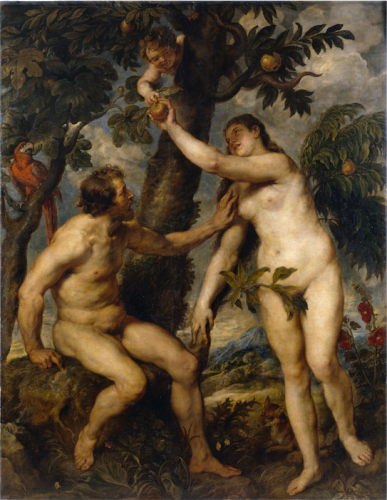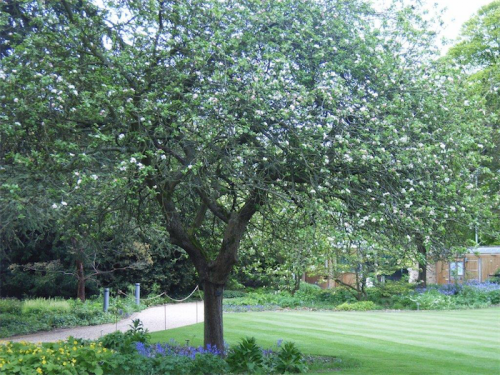
The apple Malus pumila (syn. M domestica) is possibly the earliest fruit tree to be cultivated from its origin around Kazakhstan and China.
Its earlier origins are the wild crabapple, Malus sieversii, which can still be found growing in those countries.

Another famous apple story is of Swiss archer William Tell. In 1307, Gessler the bailiff of the Court of Habsburg demanded all citizens doff their hats when he passed. Tell refused and was arrested. To get a reprieve from execution the bailiff suggested that Tell shoot an apple off his son’s head, which he did.
Many other stories abound about the humble apple, one of the easiest fruits to grow and must rank possibly No. 1 as the most popular fruit grown worldwide.
Apples are ideal for storage over long periods, with varieties from early to late maturation. In the National Fruit Collection at Brogdale in Kent, UK, there are more than 4000 varieties grown.
The names of cultivars are possibly more interesting than any other fruit. We generally only see the more boring apple names in supermarkets, but apples were often named after their breeders and some go back several hundred years, such as “Burr Knot”, “Millicent Barnes”, “Cornish Gilliflower”, Hocking Yellow”, “The Rattler” and the delightfully named “Lady’s Finger of Lancashire”.

In Canberra, we have a collection of early varieties of apples at Owen Pidgeon’s “Loriendale Orchard” at Hall. Its apple harvest festival is held each autumn.
If you are going to grow just one variety of fruit, then make it an apple with dwarf varieties and tall, slender “Ballerina” apples taking up almost no space in a garden.
It appears the drooping is a passive result of the loss of water pressure in plant cells; in other words, the trees are saving energy.
- “Ballerina” is a suitable apple tree for limited space.
- Stop codling moth grubs travelling up apple tree trunks by placing a band of heavy duty cardboard coated in any sticky substance.
- Hang codling moth traps in the tree now.
- The best book on growing apples in Australia is “All About Apples” by Allen Gilbert (Hyland House).
- The Horticultural Society’s spring exhibition and rose show will be held at the Wesley Church Centre, National Circuit, Forrest, noon-5pm on Saturday, November 12, and 11.30am-3.45pm, on Sunday, November 13.
Who can be trusted?
In a world of spin and confusion, there’s never been a more important time to support independent journalism in Canberra.
If you trust our work online and want to enforce the power of independent voices, I invite you to make a small contribution.
Every dollar of support is invested back into our journalism to help keep citynews.com.au strong and free.
Thank you,
Ian Meikle, editor




Leave a Reply